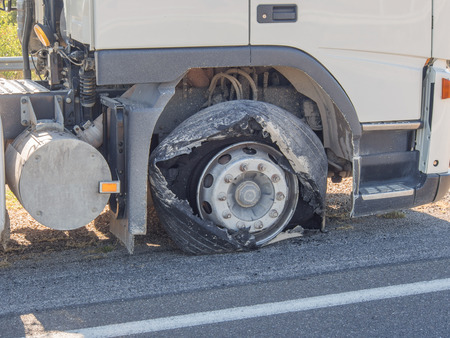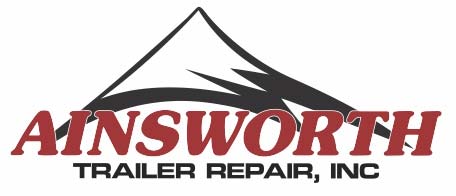
Relying on your trusty tire thumper to check air pressure? Better than nothing, it may help you notice pancake-like flats before heading out, but industry experts agree, this ‘shortcut’ is virtually useless. Thumpers can’t show you actual air pressure, showcasing no difference between tires at 120-psi, and those at 85-psi, the point where hot tires will eventually blow, making thumpers no substitution for an accurate tire pressure monitoring system or a simple hand gauge.
Blowouts are NOT a Normal Part of Business
Extremely costly and time-consuming, and extraordinarily dangerous when they result in a crash, blowouts should never be considered a ‘normal’ part of the trailer toting business. Measuring the pressure of your tire pressure precisely is worth more than the time it takes – because it doesn’t take much variation for serious problems to occur.
Tire Pressure Issues Can Blowout Your Bottom Line
- A 10% difference in pressure between duals results in enough variation to cause irregular wear in both tires. Dual tires must be kept within 5-psi to maintain the same load on each tire.
- Under-inflation of 20% reduces tread life a staggering 30%. And tires aren’t cheap.
- Under-inflated 40%? Kiss half your tire life goodbye.
- Under-inflation by 10% reduces fuel economy by 1%. (Seem minor? Add it up by tire positions, miles per year, and current fuel costs.)
- More is not better: Tire pressure increases with heat. Overinflate and you could lose traction, ending up in a dangerous situation due to bounce.
- Inflating to higher than recommended pressures for load alters tread shape, stiffens the tire casing, and causes uneven and excessive wear of the tire shoulder – even at ‘just’ 20-psi over.
The Only Reliable Way to Check Tire Pressure is with a Calibrated Gauge, Once-a-Week
This 20-minute time investment costs less than you will lose in terms of irregular wear and reduced tire life. Too much legwork? Invest in a monitoring system – it’ll more than pay for itself.
How to Determine Optimum Tire Pressure
- Invest in a calibrated gauge.
They cost only $10 more than cheaper models. Check it at a dealer with a master gauge (it’s typically free), calibrating it via the gauge’s screw adjustment to match. - Go automatic.
If you hate the thought of manually checking tires, go automatic. With an automatic tire inflation system, your indicated tire pressure will be maintained no matter the minimum. The more sensors you add, the more tires you can monitor, helping you maintain optimum pressure to guard against blowouts, respond immediately to potentially dangerous situations, and prevent downtime and emergency service calls. - Establish ideal pressure.
Stamped on the sidewall, pressures are not arbitrary, but scientifically-based on tire construction and loading. These pressures will vary based on temperature and load weight, up to 20-psi. Typical cold tire pressures are:- 110-psi for steer tires on a 12,000-lb axle.
- 75-psi for drive and trailer pressure. (This is the legal load limit, though must truckers set theirs well above – about 85-95-psi – sacrificing tire life. Check tires regularly and you won’t need ‘spare air.’)
- Don’t overcompensate for temperature.
A 30-degree drop in temperature will only result in a 2-psi drop in pressure – not much when you’re starting at proper inflation levels. - Don’t overcompensate for weight.
Taking/delivering loads up to 80,000-lbs shouldn’t be an issue. Over 80,000-lbs, and you may want to check the Tire & Rim Association table, or manufacturer load/inflation charts (available online). - Know when to adjust for hazardous conditions.
When dealing with ice, snow, mud or sand, you may need to lower pressures to boost traction until the situation has passed.
Tire problems? Don’t blow it. Ensure safety on the road with the affordable, trusted services of Ainsworth Trailer Repair today.



